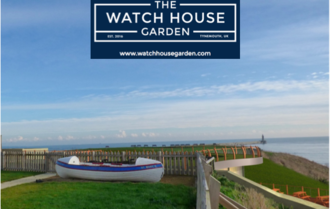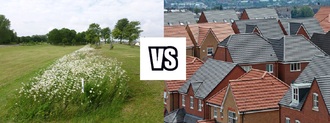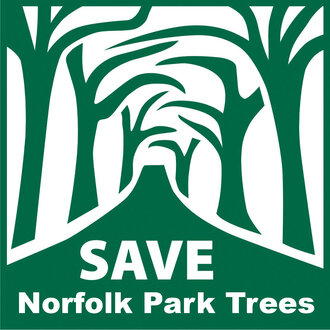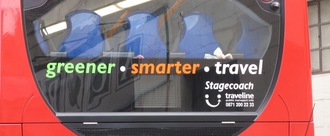-
SUPPORT Plans to Build Tynemouth Watch House Garden CYCLE HUBThe CYCLE HUB will compliment our beautiful coastline whilst providing a 'stand-out' attraction for the many cyclists, tourists and general public whom already frequent the Spanish Battery. The development will assist with the enhancement and preservation of the Tynemouth conservation area and local heritage for generations to come. North Tyneside attracts approximately 5.8 million visitors each year who inject £279 Million into the local economy, supporting over 3500 jobs. This proposal will open a disused private garden into a considerate, visually low-impact CYCLE HUB that will only be visible from the southern aspect on the River Tyne. From the outset the building has been sensitively designed to ensure the iconic views to and from the Brigade Watch House remain unspoilt. The building will be sunk beneath a manicured lawn at the same level as the current garden. We have even gone as far as to store refuse bins below ground level. Two large car parks already exist to provide customers with parking. Additional spaces will be allocated for the sole use of the Tynemouth Volunteer Life Brigades response vehicles, whilst residents parking will remain untouched. Those living on the Battery will be un-effected by the building as the aim is to cater for passing trade that already exists. The vast majority of our intended customers will arrive by foot or cycle. Our vision is to provide Tynemouth with a gateway amenity that links to the National Cycle Network and provides a valuable facility for Tynemouth residents and the wider general public. The development will ensure a notable finishing point for those tackling the challenge of the Coast to Coast/Coast to Castles/Great North Bike Rides. In essence the Cycle Hub will establish Tynemouth as a key destination within the cycling community. A multitude of independent reporting commissioned by UK GOV indicates that development and investment in cycling infrastructure and sustainable transport provides the following: • Creates inward investment to an area. • Brings more jobs and positively effects the labour market, contractors and wider infrastructure/services. • Increases health of those in the area, with exercise in excess of Chief Medical Officers guidelines. • Boosts the local economy and business • Creates a modal shift in the well being of individuals. • Increases social inclusion and connectivity. • Makes better cities and neighbourhoods. • A reduction in Crime Rate. • An increase in rental and property prices. • Eases congestion. • Improves air quality. The North East of England is renowned for its warmth and hospitality, we look forward to providing a facility that welcomes one and all.1,802 of 2,000 SignaturesCreated by Gareth Reece
-
Save Hengrove Park from housing developmentHengrove Park is the largest open recreational space in South Bristol, and an important resource used by the local community for sports and leisure activities. But Bristol Council wants to drastically reduce it in size by concreting over the majority it for housing - which will result in part of this precious resource being lost forever. The park is currently 76 hectares in size, but the proposed development of around 1700 houses would build on 45 hectares of it - reducing it in size by more than half. The green space left will be considerably smaller and fragmented, and a shadow of the current amenity. Parks must be protected for communities and future generations, and the Council needs to understand how passionately people feel about public assets being sacrificed for development. Local councillors recently blocked a move to build this increased number of houses, and the council's proposal is being referred to a special meeting on Monday March 27th 4pm at the Council House, College Green, Bristol, which could overturn their attempts to block the expanded development. They urgently need our support.438 of 500 SignaturesCreated by Damon Jones
-
Give York Back to the PedestriansYork is a medieval city with narrow streets, ancient buildings and lots of tourists. Moving around parts of the city during the day can be difficult and dangerous, especially for those with limited mobility. There is constant traffic in parts of the city where there need not be, car users taking advantage of their privilege with no thought to the safety or rights of others. I believe that removing cars from York city centre would be beneficial to tourism, as it would make moving around the city easier. Additionally, heavy goods vehicles have done damage to a number of ancient buildings on Stonegate and Gillygate. Goods vehicles should be restricted to those of an appropriate size for the narrow nature of the streets in the ancient part of the city. The rights of a few car-users are currently trumping the rights of the majority of York residents. Polluting our air, crowding the city and causing danger to residents and tourists alike. Pedestrianisation will encourage the use of public transport and bicycles to access the city, thus improving the air quality in and around York and working towards a more sustainable future. Improving pedestrian and cycle access from residential areas to the city will further improve accessibility for those without the privilege of their own car. There are many ancient cities in Europe that are either partly or fully pedestrianised, without a significant impact on tourism or business. Make York an example to the rest of the United Kingdom for preserving the heritage of our ancient cities.31 of 100 SignaturesCreated by Adam Doxford
-
Save the great tree pub stop the demolition and grant community asset transferTo save and celebrate our local history and heritage. To gain community asset transfer to restore the building to its former glory.123 of 200 SignaturesCreated by Rachel Jones
-
Save CERT (UK) CharityPrior to Storm Desmond I hadn't really comprehended what was involved or what was needed; before, during and after such an event. I thought that within a few months people would be okay, insurance companies, local and national government would step in, support and pick up the pieces. In the real world this isn't really what happens. Now 17 months down the line as an organisation we have over 650 flood affected clients on our books. We have supported over 20,000 homes and businesses throughout the UK with physical, email, social media and verbal support when they have been in crisis, emergency or disaster due to floods and other emergencies. This has accumulated a total of 104,000 volunteer hours over the past 17 months with little to no funds. We are now in a position that we need to find funds to keep going, with the continued ongoing support and needs of those who were flooded, physically, mentally and emotionally many are still suffering greatly. We have run on a shoe-string the past 17 months with only £153,000 in funding and donations spent to date. This only goes to show that we are extremely frugal with all funding and use every penny to it's best advantage. Overheads are as low as we can possibly make these with limited paid staff, relying on volunteers to make the organisation run. It's not "If we flood again, it's WHEN we flood again!"2,885 of 3,000 SignaturesCreated by Kerryanne Wilde
-
Save the Norfolk Park 11Between August 2012 and December 2016 Amey the Council contractor felled over 4200 trees across Sheffield. Now they are planning to chop down 27 of our local street trees. Some of these trees are near the end of their life and should be replaced, many others are mature healthy trees that help to keep the air clean (1), protect our homes from flooding (2) and provide a habitat for local wildlife (3), as well as making our streets nicer and healthier places to live (4). Mature trees are particularly good at filtering out pollution (5), cooling the air in summer (6) and maintaining nature's delicate balance (7). Four of the trees are said to be damaging the pavement and are therefore discriminatory to disabled people and those using pushchairs. We believe the damage is minor and does not impair accessibility for disabled people, or the users of prams and pushchairs. Alternative highway engineering specifications (8), such as use of flexi-pave and/or pavement restructuring near trees, with kerb stones sculpted to accommodate roots, would represent a sustainable solution to the perceived problems. The other trees are said to be diseased or dangerous. Our experts say with sensible management and in some cases some pruning, the following 11 trees will thrive for many years and should be saved. Seabrook Rd/Stafford Road healthy mature sycamore (“damaging”) Tylney Rd healthy mature sycamore at no.7 (“damaging”) 52 Park Spring Drive - mature healthy cherry tree (“disease”) 76 Park Spring Way - mature healthy sycamore (“dangerous”) Opposite Norfolk Community School, Guildford Avenue – 2 mature whitebeam trees. (“dangerous/disease”) Norfolk Park Road 3 Horse Chestnuts grouped together near Sheffield College (“dangerous/disease”) Holdings Road (outside nos.7 and 31) Cherry Trees (“damaging”) The Council carried out a survey of households to see if people wanted to save the trees. This was deeply flawed as many houses and in some cases whole streets were missed out. References (1) Karl, T., Harley, P., Emmons, L., Thornton, B., Guenther, A., Basu, C., & Jardine, K. (2010). Efficient atmospheric cleansing of oxidized organic trace gases by vegetation. Science, 330(6005), 816-819.http://www.sciencemag.org/content/330/6005/816.short Escobedo, F., Kroeger, T. & Wagner, J. (2011). Urban forests and pollution mitigation: analyzing ecosystem services and disservices. Environmental Pollution, Volume 159, pp. 2078-2087.http://scholar.google.co.uk/scholar?cluster=14928633190131047233&hl=en&as_sdt=0,5 (2) Trees and Design Action Group (2012). Trees in the Townscape: A Guide for Decision Makers, s.l.: Trees and Design Action Group.http://www.tdag.org.uk/trees-in-the-townscape.html Construction Industry Research and Information Association, 2013. CIRIA Research Project RP993: Demonstrating the multiple benefits of SuDS – A business case (Phase 2). Draft Literature Review. [Online] Available at: http://www.susdrain.org [Accessed 25 May 2015].http://www.susdrain.org/files/resources/ciria_guidance/ciria_rp993_literature_review_october_2013_.pdf (3) Ewers, R. M., & Didham, R. K. (2006). Confounding factors in the detection of species responses to habitat fragmentation. Biological Reviews, 81(01), p. 117-142. http://scholar.google.co.uk/scholar?cluster=1003233194462145743&hl=en&as_sdt=0,5 Gilbert‐Norton, L., Wilson, R., Stevens, J. R., & Beard, K. H. (2010). A Meta‐Analytic Review of Corridor Effectiveness. Conservation Biology, 24(3), p. 660-668. http://onlinelibrary.wiley.com/doi/10.1111/j.1523-1739.2010.01450.x/full (4)Sarajevs, V. (2011). Health Benefits of Street Trees, Farnham: Forest Research. http://www.forestry.gov.uk/fr/INFD-8JCEJH Williams, K., O'Brien, L. & Stewart, A.. (2013). Urban health and urban forestry: how can forest management agencies help?. Arboricultural Journal: The International Journal of Urban Forestry, Volume 35, pp. 119-133.http://www.tandfonline.com/doi/pdf/10.1080/03071375.2013.852358 (5) Shackell, A. & Walter, R. (2012). Greenspace Design For Health And Well-being, Edinburgh: Forestry Commission.http://www.forestry.gov.uk/PDF/FCPG019.pdf/$FILE/FCPG019.pdf Velarde, M., Fry, G. & Tveit, M. (2007). Health effects of viewing landscapes – Landscape types in environmental psychology. Urban Forestry & Urban Greening, Volume 6, p. 199-212.http://www.sciencedirect.com/science/article/pii/S1618866707000416 (6) Forestry Commission (2011). The UK Forestry Standard: The governments’ approach to sustainable forest management. 3rd ed. Edinburgh: Forestry Commission. http://www.forestry.gov.uk/ukfs (7) Gonzalez, A., Rayfield, B., & Lindo, Z. (2011). The disentangled bank: how loss of habitat fragments and disassembles ecological networks. American Journal of Botany, 98(3), p. 503-516.http://www.amjbot.org/content/98/3/503.full (8) Trees and Design Action Group. (2014) Trees in Hard Landscapes: A Guide for Delivery. TDAG http://www.tdag.org.uk/trees-in-hard-landscapes.html519 of 600 SignaturesCreated by Graham Wroe
-
Stop Capital One's wasteful promotional marketingCredit cards are made from PVC. According to Greenpeace, PVC is one of the world's largest dioxin sources. This group of chemicals is some of the most toxic chemicals ever released into the environment.43 of 100 SignaturesCreated by Kathryn Jones
-
Protect Mapledurham Playing FieldsA Guardian article, published in June last year, estimated that sites for a further 500 free schools are required and that most will be playing fields. Recent National Audit Office criticism of the Education Funding Authority (EFA) for overpaying for free school sites, will make playing fields an even more attractive cheap option. Although playing fields are usually protected from development by local authority planning policies, the EFA are exempt from these. Mapledurham Playing Fields, a charitable trust bequeathed exclusively for recreation (Recreation Ground Charity #304328), is a case in point. This has been targeted by the EFA as the site of a free school. The trustee, Reading Borough Council (RBC), which is also the Local Education Authority responsible for meeting demand for school places, has given conditional approval to the plan. The EFA has submitted planning application. This contravenes national and local planning policy and is opposed by Sport England, Fields in Trust, the Campaign for Protection of Rural England, RBC's own Parks Department as well as hundreds of local residents and Playing Fields users. Nevertheless we believe that planning permission may very well be granted. If you believe parks and playing fields should be protected and would like to add your voice in support of this test case please sign our petition. Further information about the campaign to protect Mapledurham Playing Fields is available at www.ProtectMPF.uk or email [email protected]. The planning application, which is case 171023, can be viewed in the planning applications on RBC's website at planning.reading.gov.uk660 of 800 SignaturesCreated by Gordon Watt
-
Government funding for electric vehicle charging points in NorthumberlandThe small number of charging points are being monopolised by taxi firms stopping the general public from charging their vehicles. Northumberland council blames lack of government funding. If the government wants to encourage the public to drive electric, the charging infrastructure must be improved.7 of 100 SignaturesCreated by Nicholas Hall
-
Save Our Highland Bus ServicesMany people rely on buses for a variety of reasons. We would like to see an expansion of bus services, in consultation with the public as to where these are most needed, and a campaign for greater use, rather than admitting defeat and contributing to the decline by cutting vital services which people need. This would have benefits in terms of cutting congestion and reducing climate change as well as reducing the social isolation which will only get worse if your new timetable is enacted.174 of 200 SignaturesCreated by Anne Thomas
-
Remove additional business rates for solar panels.A likely response by government is that the country could not afford it. The reality is the country and the world in general cannot afford to ignore this issue. Calculations based on a range of scientific studies over past decades (for summary see Ward, 2007) suggest a dangerous tipping point around 2040. This is the point where atmospheric CO2 will reach a concentration of 450 ppm if the world continues on its current trajectory. This danger point is where the IEA450 guideline gets its name. It is where an ocean conveyor (main ocean current) shutdown is predicted to happen due to the preferential warming of the Polar Regions. The consequences of this scenario cannot be treated lightly – this is serious. If this event takes place then the oceans become stagnant and everything dies. Anaerobic (requiring no oxygen) microorganisms grow by feeding off the rotting marine carcasses. In the process this generates huge quantities of hydrogen sulphide (H2S) which ultimately poisons the atmosphere and kills everything on land as well. This was the mechanism for four out of the five great mass extinctions in the geological past. I make no apologies for this statement. The world’s leaders really must look up and take note, and we in the UK must play our part. Reference: Ward PD, (2007), “Under a Green Sky”, Harper-Collins.65 of 100 SignaturesCreated by Jim Austin
-
Blue Badge Parking for People with DementiaI’m calling for a change in the rules so that people with dementia are specifically eligible to apply for a Blue Badge, which means easier trips to the shop, the doctor’s or the hospital for dementia patients if they choose to apply. “I hope the Government will consider this change.” The final decision on who is eligible is up to local councils. But Government provides guidance can prove crucial in earmarking badges - and dementia is not on the list of criteria. Charities say some local authorities give blue badges to people with dementia while others enforce much tighter rules. Although the person with dementia may be able to walk the required distance that exempts them from being issued a Blue Badge the person has to be helped in and out of their vehicle, and guided, they can be unsteady on their feet and suffer dizziness/confusion as to where they are because of their dementia. This means that, e.g. they cannot be dropped off while a driver goes to park, because they are in danger from wandering off or walking into the road. Campaigners say the disease can be as mentally and often physically debilitating as other illnesses. The number of people with dementia is set to rise from 850,000 this year to over two million by 2051. Alzheimer’s Society national campaigns manager Sam Gould said: “Many people with dementia gradually lose their ability to walk and perform simple tasks as their condition progresses. “This means activities that many of us take for granted, like visiting the shops or attending GP appointments, can become physically challenging and make some journeys daunting. “We support the call for people with dementia to be able to access the Blue Badge scheme, as this could mean that more people with dementia are able to continue doing the things they enjoy and maintain their independence for longer.”153 of 200 SignaturesCreated by suzanne duckworth
Hello! We use cookies to improve your experience by providing insights into how the site is being used. Find out more.












